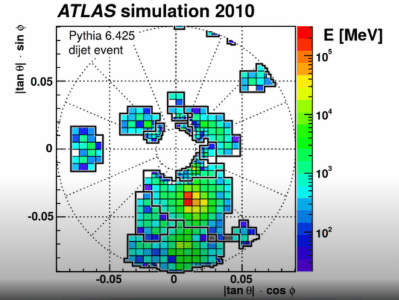CERN’s Large Hadron Collider Runs on A Bendix G-15 in 2025
The Bendix G-15 refurbished by [David at Usagi Electric] is well known as the oldest digital computer in North America. The question [David] gets most is “what can you do with it?”. Well, as a general-purpose computer, it can do just about anything. He set out to prove it. Can a 1950s-era vacuum tube computer handle modern physics problems? This video was several years in the making, was a journey from [David’s] home base in Texas all the way to CERN’s Large Hadron Collider (LHC) in Switzerland.
The G-15 can run several “high-level” programming languages, including Algol. The most popular, though, was Intercom. Intercom is an interactive programming language – you can type your program in right at the typewriter. It’s much closer to working with a basic interpreter than, say, a batch-processed IBM 1401 with punched cards. We’re still talking about the 1950s, though, so the language mechanics are quite a bit different from what we’re used to today.
To start with, [Usagi’s] the G-15 is a numeric machine. It can’t even handle the full alphabet. What’s more, all numbers on the G-15 are stored as floating-point values. Commands are sent via operation codes. For example, ADD is operation 43. You have to wrangle an index register and an address as well. Intercom feels a bit like a cross between assembler and tokenized BASIC.
If you’d like to play along, the intercom manual is available on Bitsavers. (Thanks [Al]!)
In the second half of the video, things take a modern turn. [David’s] friend [Lloyd] recently wrote a high-speed algorithm for the ATLAS detector running at the Large Hadron Collider at CERN. [Lloyd] was instrumental in getting the G-15 up and running. Imagine a career stretching from the early days of computing to modern high-speed data processing. Suffice to say, [Lloyd] is a legend.
There are some hardcore physics and high speed data collection involved in ATLAS. [Allison] from SMU does a great job of explaining it all. The short version is: When particles are smashed together, huge amounts of information is collected by detectors and calorimeters. On the order of 145 TB/s (yes, TerraBytes per second). It would be impossible to store and analyze all that data. Topoclustering is an algorithm that determines if any given event is important to the researchers or not. The algorithm has to run in less than 1 microsecond, which is why it’s highly pipelined and lives inside an FPGA.
Even though it’s written in Verilog, topoclustering is still an algorithm. This means the G-15, being a general-purpose computer, can run it. To that end, [Lloyd] converted the Verilog code to C. But the Bendix doesn’t run C code. That’s where G-15 historian [Rob Kolstad] came in. Rob ported the C code to Intercom. [David] punched the program and a sample dataset on a short tape. He loaded up Intercom, then Topoclustering, and sent the run command. The G-15 sprang to life and performed flawlessly, proving that it is a general-purpose computer capable of running modern algorithms.
youtube.com/embed/2y0DO8d7Az0?…
Curious about the history of this particular Bendix G-15? Check out some of our earlier articles!





